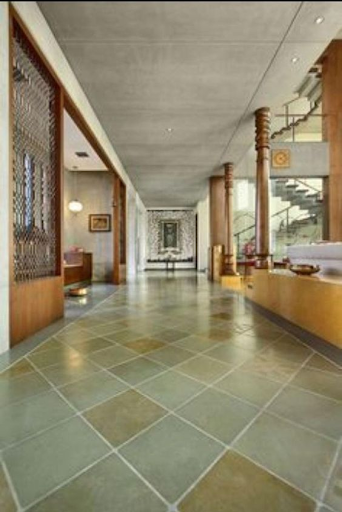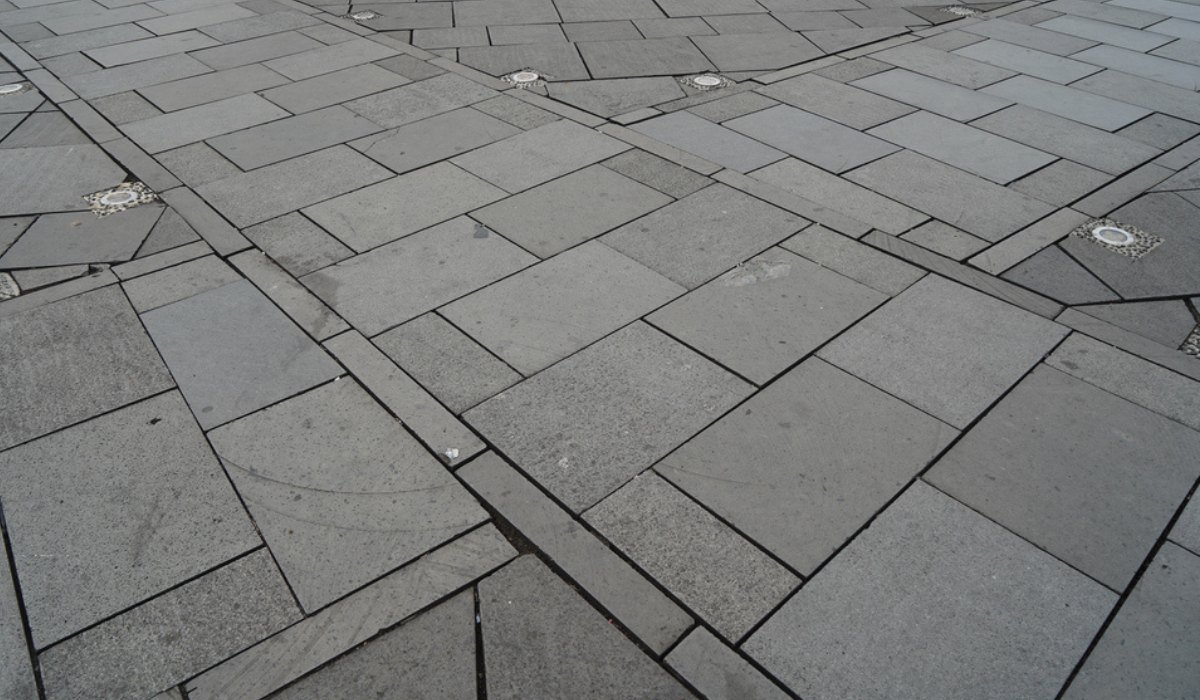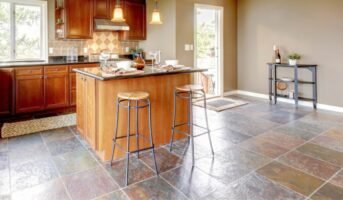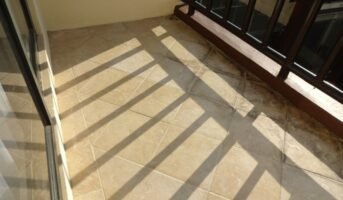What is Kota stone?
Kota stone is a type of stone flooring made from concrete. It has been used for centuries in various countries around the world. But it has recently become popular because it has many advantages over other types of flooring.
Kota stone is acquired from limestone quarried in India and Pakistan. It is a great flooring material because it’s durable, easy to install, and offers great durability. Kota stone is also very versatile; it can be used in kitchens and bathrooms as well as in basements, garages, and even bedrooms.
Kota stone flooring: Advantages
Kota stone has many advantages over other flooring options.
- Kota stone is a durable material used in homes across southeast Asia for hundreds of years.
- It is resistant to water damage and can withstand rough wear and tear without chipping or cracking. So if you’re looking for a flooring option that will withstand heavy foot traffic without getting worn down quickly, this might be the perfect material for you.
- Kota stone is environmentally friendly. It can be used in kitchens and bathrooms without damaging the environment.
- It provides a modern look to any room of your home, whether it is in the kitchen or bedroom. It will fit right into any decorating scheme you have planned for your home.
- It’s also very easy to clean since it’s natural stone rather than man-made plastic or vinyl tile options like linoleum or vinyl plank floors. You can expect your flooring to last longer than other kinds of surfaces do.
see also about: living room granite flooring
Kota stone flooring: Disadvantages
While Kota stone is a great choice for installation in kitchens and bathrooms due to its durability and versatility, it has some drawbacks as well.
- Kota stone comes in only one colour, white. And there are no other choices when it comes to colour selection. However, this can be easily remedied by adding some colour into the mix with paint or wallpaper.
- Even when polished, it lacks the lustre of marble or the hardness of granite.
- Due to its innate brittleness, the stone does not come in very large slabs. The most common size is 2 x 2 feet or 2 x 4 feet.
- Depending on the size, Kota stone can be up to 1.5 inches thick. It adds to the flooring thickness and cannot be combined with thinner slabs or tiles.
- Rather than laying it as a large slab, it is recommended to lay it as a small tile. Cracking or breaking is a possibility.
- While polishing the surface, some surface flaking may occur due to inconsistencies in hardness.
Know about: linoleum flooring
Kota stone price
Kota stone tiles are one of the most affordable natural stones available for Rs 15 to Rs 30 per square foot. The finer varieties of Kota stone can cost as much as Rs 100 per square foot. Tiles that need to be polished, honed, and sealed will cost more.
Kota stone design ideas
Here are some amazing design ideas for incorporating kota stone in your home decor.
Indoor Kota stone flooring
Kota stone flooring is a popular choice for indoor spaces due to its durability, natural beauty, and low maintenance requirements. This type of flooring is made from limestone and is available in a range of colours and finishes. It is resistant to scratches, stains, and moisture, making it ideal for high traffic areas.

Source: Pinterest
Outdoor Kota stone flooring
Kota stone flooring is also a great option for a home’s outdoor spaces. It is a durable and weather-resistant flooring material that can withstand heavy foot traffic, rain, and other outdoor elements. It is available in a range of colours and finishes, which can add to the overall aesthetic appeal of the outdoor space.

Source: Pinterest
Kota stone wall cladding
Kota stone is also used for wall cladding in homes due to its durability and natural beauty. It is available in different shapes and sizes, making it a versatile option for creating unique designs. Kota stone wall cladding can add an earthy and rustic feel to a home’s interior or exterior spaces.

Source: Pinterest
Kota stone kitchen countertops
Kota stone is a popular choice for kitchen countertops due to its durability, heat resistance, and natural beauty. It is available in a range of colours and finishes that can complement different kitchen styles. Kota stone countertops are easy to clean and maintain, making them a practical choice for busy kitchens. Proper sealing can prevent staining and ensure the longevity of Kota stone countertops in a home’s kitchen.

Source: Pinterest
Kota stone flooring: Installation
To install Kota stone, both horizontal and vertical surfaces can be utilised, however, the process slightly varies for both. It can be installed alone or combined with other materials to create a unique look. Additionally, it can also be used as an outside wall covering. Here are the steps for installing Kota stone flooring.
For horizontal surfaces
- Prepare a levelling course and apply a 20-25 mm thick foundation of cement mortar (1:3 ratio of cement to coarse sand) with waterproofing compound.
- Spread Rough Kota Stone 20-25 mm thick over the cement mortar.
- Incorporate waterproofing compound into the cement slurry used to grout joints.
- Apply a second layer of 20-25 mm thick cement mortar (1:3 ratio of cement to coarse sand) with waterproofing compound over the Kota Stone surface.
- Finish the top with 10 to 12 mm-thick stone aggregate deeply embedded in the second layer of cement mortar at a density of 8 cubic metres per square metre.
For vertical surfaces
- Fasten Rough Kota Stone with a mortar of cement and coarse sand (1:3 ratio) along with the appropriate amount of waterproofing compound to the vertical surface with a thickness of 20-25 mm.
- Leave a 20-25 mm space between the Kota Stone and the receiving surface before applying cement slurry.
- Fill the gap with a mixture of waterproofing compound and cement slurry.
- Incorporate waterproofing compound into the cement slurry used to grout joints.
- Apply cement mortar (1:3 ratio of cement to coarse sand) to the outside of Kota Stone in the prescribed amounts along with waterproofing compound.
Kota stone flooring: Maintenance
Maintaining Kota stone flooring is essential to ensure it lasts for years without losing its shine and durability. Here are some tips to maintain Kota stone flooring:
- Regular cleaning: Sweep or vacuum Kota stone floors regularly to remove dirt and debris.
- Mop with a mild cleaner: Use a pH-neutral cleaner mixed with water to mop the floor. Avoid using acidic or harsh cleaners that can damage the stone.
- Wipe spills immediately: Wipe up spills immediately to prevent staining.
- Seal the stone: Seal the Kota stone flooring every 6-12 months to protect it from stains and damage.
- Avoid heavy impacts: Avoid dropping heavy objects or dragging furniture over the Kota stone flooring to prevent scratches or cracks.
- Regular polishing: Get the Kota stone flooring polished regularly to maintain its shine and beauty.
Kota stone vs granite
Kota stone is a type of granite. It has a similar appearance and colour, but it differs in the way it is made. Kota stone is quarried from natural deposits, whereas granite is mined from an existing quarry. This means that Kota stone is processed differently:
- Kota stone is quarried from natural deposits, which means that it comes from the earth itself. Granite is mined from quarries, which means it doesn’t come from the earth itself.
- Kota stone has been used as flooring for centuries, while granite was only discovered in the 18th century.
- Granite is more expensive than Kota stone because it requires fewer steps to produce and requires less skilled labour to manufacture.
- Kota is softer and prone to surface flaking than granite, which is considered to be one of the hardest stones.
- Since Kota stone is composed of limestone, it is porous, unlike granite.
- In contrast to polished granite, Kota stone is susceptible to staining and discolouring when exposed to acids.
- Granite is one of the most expensive natural stones, while Kota is one of the cheapest.
- Polished granite is slippery when wet, which makes it unsuitable for use as kitchen flooring and decking. There is no slipping on Kota stone.
- Compared to granite, Kota stone does not have the same hard shine and lustre.
FAQs
Is Kota stone suitable for flooring?
Natural and sustainable, Kota stone is a cost-effective, very durable, and beautiful flooring material.
How much does Kota stone cost?
It starts at Rs 15 per square foot and costs up to Rs 50 per square foot.
What are the uses of Kota stone flooring?
This stone can be polished or rough-dressed. It is excellent for pathways, corridors, driveways, and commercial buildings. Chemical industries also use it because of its resistance.
Housing News Desk is the news desk of leading online real estate portal, Housing.com. Housing News Desk focuses on a variety of topics such as real estate laws, taxes, current news, property trends, home loans, rentals, décor, green homes, home improvement, etc. The main objective of the news desk, is to cover the real estate sector from the perspective of providing information that is useful to the end-user.
Facebook: https://www.facebook.com/housing.com/
Twitter: https://twitter.com/Housing
Email: [email protected]











